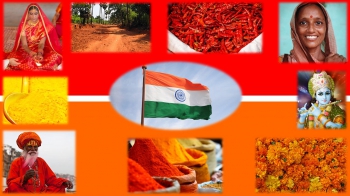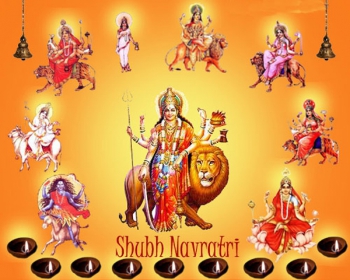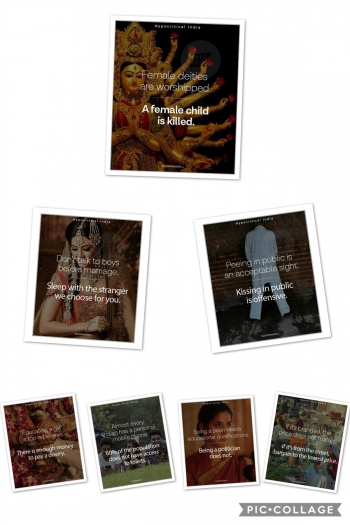10/09/2017
Fertility, infertility, assisted reproduction and medical tourism in India
Recently an Indian la dy came to my office to discuss about about infertility and breastfeeding. Curious, I asked almost immediately what is India’s rank in terms of infertility on a global scale. I had been curious about that for a while actually, as I see more and more ‘infertility centers’ popping up everywhere in the last few years.
dy came to my office to discuss about about infertility and breastfeeding. Curious, I asked almost immediately what is India’s rank in terms of infertility on a global scale. I had been curious about that for a while actually, as I see more and more ‘infertility centers’ popping up everywhere in the last few years.
Her answer surprised me: according to her, the countries most affected by infertility are Japan and Germany. Who would have thought? I wouldn’t, neither did I believe it…
So I dug a little and soon discovered that it is actually almost impossible to find a clear answer to my question; for one thing the infertility criteria vary from one country to another, making it almost impossible to make any world ranking and also because censuses can only be far from comprehensive – all the people who do not reproduce don’t necessarily get checked for infertility.
What could she mean then? Did she mistake infertility rate (or number of people who can not conceive a child) and fertility rate (or number of births per woman)?
India is a country where women justify their presence in the world only when they become a mother – that is still strongly the case and that’s why we see very old ladies becoming first time mothers (source). Taking this into account, I wouldn’t be too surprised if, for her, when a woman has no child it is not a question of choice but just because she can’t.
But even then, Japan and Germany are not on top of the least fertile countries (see table below).
Where Japan ranks first, however, is in the number of births using ART (Artificial Reproductive Technology). Perhaps she mistook infertility and assisted reproduction?
Both are not the same. One can for instance imagine that in some countries (like Japan) parents rely more on medical assistance than in other countries, not only because they are medically infertile, but also because they do not have sex (no time, no desire (source)), or because ART is affordable or covered by insurances, or because of some other reasons. I make this assumption because if Japanese champion the number of assisted procreations, their infertility rates appear to be even lower than elsewhere (see table below). In short, there is no evidence that the Japanese face more difficulties to conceive, but everything indicates that the use of a medical assistance has become quite common.
But let us get back to our Indian business. The numbers that I’ve gathered suggest that 45% of couples suffer from infertility in India (source) but less than 1% of the affected couples seek medical advice (source).
And yet I see boards at almost every street corner, signaling a clinic specializing in the treatment of infertility. And almost every gynecologist now claims to be an IVF specialists.
In short, it is almost impossible to tell if there are more procreations medically assisted in India because 1. There is an increasing number of infertile couples in India – a hypothesis linked to urbanization rates, obesity trends, number of women with professional careers rising up, hypothesis put forward by the media; 2 Indians are increasingly going past the social stigma associated with the state of infertility and seek more official medical help (because I’m sure there are many cases not reported, we know already that 60% of ‘physicians’ in India have no medicine degree (source)); 3. Doctors have found a honey pot and invest on it – the less ethical ones would not hesitate too much before inseminating or implanting an embryo in Indian couples with non-existent sex life rather than counselling them, other ones focusing on the international patient base who more and more comes to India to make a baby because it is three times cheaper here than in the United States (see table below); Or probably it is a mix of all these factors.
A small digression to conclude: India seems to be the hub of parenthood. Apart from the medical tourism of fertilization, there is the adoption business or even the business of surrogacy. India got famous about this abroad in 2007, when an Oprah’s show staged a Western couple going to India and its plethora of surrogate mothers. Because it took too important proportions – foreigners (and Indians) doing their shopping and surrogates being paid peanuts (since agents and doctors keep the jackpot for themselves), the Government tried to put an end to this in 2016. Which means they prohibited surrogacy purely and simply*. It’s easier to ban than to put controls in place. Although it encourages the development of the black market of surrogacy and it is the surrogate mothers who end up suffering the most.
It’s kind of what happened with adoption. Until the 1970s, India had more and more orphans and Indians were reluctant to adopt – because of the social stigma, and the apprehension of bringing someone in the family that they know nothing about, with caste requirements and all (source). But foreigners were keen on adopting. Which obviously led to some derivatives, such as theft and trafficking of kids by some ill-intentioned Indians. Following scandals in the 1990s, India toughened the laws and made every adoption difficult, even for Indians. However it seems that the Government has been making the rules related to adoption easier since 2015.
* After the new law (source) only an Indian couple having tried without success to have a baby for more than five years can have recourse to a surrogate mother, who must be from the family, and they will only pay for the medical expenses, no incentive.
Sources : http://www.prsindia.org/billtrack/the-surrogacy-regulatio...? ; https://www.cia.gov/library/publications/the-world-factbo... ; https://www.palashivf.com/2017/02/21/ivf-treatment-market... ; http://www.ey.com/Publication/vwLUAssets/EY-call-for-acti... ; http://www.dailyo.in/lifestyle/infertility-on-the-rise-in... ; http://www.who.int/reproductivehealth/topics/infertility/... ; http://journals.plos.org/plosmedicine/article?id=10.1371/... ; http://www.ijsr.net/archive/v4i7/SUB156201.pdf ; http://www.aurumequity.com/ivf-india/ ; https://www.researchgate.net/publication/236005514_Adopti...
08:00 Posted in Incredible India! | Permalink | Comments (0) | Tags: india, fertility, infertility, ivf, art, cost, comparison | ![]() Facebook | |
Facebook | |
09/25/2017
Why in India people don't wear black?
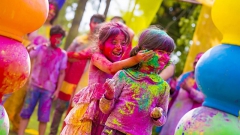 In India, colors are waltzing, everywhere, all the time. No need to wait for Holi, the festival where everyone throws colored powders and bombs to water at each other, to see red, yellow, purple, pink shimmering under the almost-daily sun. Indians wear colours on them, and it looks good. Especially Indian women.
In India, colors are waltzing, everywhere, all the time. No need to wait for Holi, the festival where everyone throws colored powders and bombs to water at each other, to see red, yellow, purple, pink shimmering under the almost-daily sun. Indians wear colours on them, and it looks good. Especially Indian women.
But why so many rainbows and no black? Is it because they see life in pink? Or because black attracts the sun's rays? If that was the reason, would it mean that Muslim women in desertic countries wearing dark colour niqabs or burqas are masochists?  Apparently, according to the Koran, black is not compulsory, whatever women cover themselves with must just be ugly, or at least it should be dull enough to not attract the (lusty) gaze of men – so much in European countries, where they get stared at for the same purpose of wearing a niqab or even just a hijab! So why do they chose black for this type of clothing? According to some, under a dark garment, as this color absorbs heat, it is so hot that you sweat, which in turn cools you down; It’s by the way the same explanation for the drinking of hot tea in burning countries. In India, the theory for tea was adopted, but not for wearing black.
Apparently, according to the Koran, black is not compulsory, whatever women cover themselves with must just be ugly, or at least it should be dull enough to not attract the (lusty) gaze of men – so much in European countries, where they get stared at for the same purpose of wearing a niqab or even just a hijab! So why do they chose black for this type of clothing? According to some, under a dark garment, as this color absorbs heat, it is so hot that you sweat, which in turn cools you down; It’s by the way the same explanation for the drinking of hot tea in burning countries. In India, the theory for tea was adopted, but not for wearing black.
 But why? Why is black colour has a negative connotation in spirituality and superstition (1)? Would it simply because it attracts mosquitoes, according to the popular belief – or at least to the belief of my nanny and my neighbor? CNN says it’s a myth. But the expert, in the interview, also says that what attracts mosquitoes is the carbon dioxide emitted by the body and the body heat. It goes in the sense of Muslim theories: we sweat more under a dark garment, and therefore the skin produces more carbon dioxide; and more definitely more heat since black absorbs it from the sun. So maybe it’s not completely a myth. And myth or not myth, I have noticed that mosquitoes prefer to rest on the dark things (door, bed, mirror) rather than on my white walls - and I have always thought they were shrewd enough to master camouflage techniques! (PS: did you know? Mosquitoes feed on plant nectar and don’t need blood as food but as a protein intake related to reproduction; vampires are all females!)
But why? Why is black colour has a negative connotation in spirituality and superstition (1)? Would it simply because it attracts mosquitoes, according to the popular belief – or at least to the belief of my nanny and my neighbor? CNN says it’s a myth. But the expert, in the interview, also says that what attracts mosquitoes is the carbon dioxide emitted by the body and the body heat. It goes in the sense of Muslim theories: we sweat more under a dark garment, and therefore the skin produces more carbon dioxide; and more definitely more heat since black absorbs it from the sun. So maybe it’s not completely a myth. And myth or not myth, I have noticed that mosquitoes prefer to rest on the dark things (door, bed, mirror) rather than on my white walls - and I have always thought they were shrewd enough to master camouflage techniques! (PS: did you know? Mosquitoes feed on plant nectar and don’t need blood as food but as a protein intake related to reproduction; vampires are all females!)
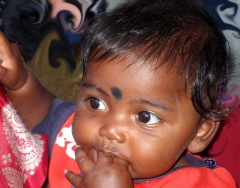 (1) Black is the color of evil, negativity and inertia; It symbolizes anger, darkness and is associated with the lack of energy, death though it is not the color of mourning. As a representation of evil, it is also used to combat the latter – take the form of the enemy to defeat him – as can be seen in the black dot applied on the face of infants to keep the dark evil eye at bay.
(1) Black is the color of evil, negativity and inertia; It symbolizes anger, darkness and is associated with the lack of energy, death though it is not the color of mourning. As a representation of evil, it is also used to combat the latter – take the form of the enemy to defeat him – as can be seen in the black dot applied on the face of infants to keep the dark evil eye at bay.
White is the absence of color; It’s the ‘non-color' worn at funerals and by widows throughout the rest of their lives, as a sign of renouncing all the pleasures/colors of life.
Red symbolizes violence, the fire that burns and therefore also the purity – in India fire has purifying virtues. It is also the color for the bride’s sari. Red also has connotations of sensuality, fertility and prosperity. Women wear a red dot on the forehead (see more about tilak, sindoor and bindi here). Favorite chilis are red. The super fertile earth is red in some areas. Orange or saffron, is the real color of fire and purity; When it is worn, it indicates its bearer has renunced the world and is in a quest for the sacred.
The yellow of the turmeric symbolizes holiness, blue is associated with the god Krishna, green represents renewal and joy. If you dig a little more, each color is associated with a certain God or goddess and represents its main qualities.
During the Holi festival: the pigments they throw at one another have very specific meanings: green for harmony, orange for optimism, blue for vitality and red for joy and love” (source: Wikipedia).
Another example is the color dress code to be observed during Navratri (from 21 to 29 September this year). Each of the 9 days of the festival is dedicated to one of the forms of the goddess Durga.
- Day 1 - Pratipada, goddess as ‘daughter of the mountains’ and consort of Shiva – Red for action and strength
- Day 2 - Brahmacharini, dispenser of happiness and prosperity – royal Blue for a quiet but powerful energy
- Day 3 - Chandraghanta, the goddess with a half moon on the forehead represents the beauty and the courage of the one fighting against the demons – Yellow, color that warms the heart
- Day 4 - Kushmanda, who created the universe covered with green vegetation – Green
- Day 5 - Skand Mata, who holds the infant Karthik in her arms – Gray for the vulnerability of the mother (who can turn into storm clouds to protect her little)
- Day 6 - Katyayani, when she was reborn as the daughter of the sage Kata as per his wish – Orange for courage
- Day 7 - Kalratri, black as night and very angry – White as her garment, and for peace and prayer
- Day 8 - The goddess is dressed in pink and destroys all sins of all times – Pink for a fresh start and renewal
- Day 9 - Siddhidatri with supernatural powers of healing – light Blue, like the cloudless sky
Sources: http://www.sensationalcolor.com/color-meaning/color-around-the-world/India-country-symbolic-colors-1935#.WB-kCMbYXIU ; https://www.theindusparent.com/significance-of-colours-in...
https://www.nbcnews.com/health/why-some-people-are-mosqui... ; http://Edition.CNN.com/2014/07/04/health/mosquito-bites-m...
08:00 Posted in Funny things about India in photos, Why in India... | Permalink | Comments (0) | Tags: india, colours, black, white, red, orange, blue, religion, spirituality, holi, navratri, durga, colour code, red dot on the forehead | ![]() Facebook | |
Facebook | |
09/18/2017
Indian ironies (1)
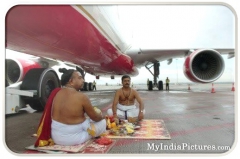 I often say that I find it very difficult to speak about India because whatever I can say about India is true, and the opposite as well. In other words, if I say something, anybody can also give me examples of the contrary; and we could both be right! To illustrate, here are some ‘Indian ironies’ available on the Net (I didn’t write them); I would have loved to find the same about the French but I didn’t…
I often say that I find it very difficult to speak about India because whatever I can say about India is true, and the opposite as well. In other words, if I say something, anybody can also give me examples of the contrary; and we could both be right! To illustrate, here are some ‘Indian ironies’ available on the Net (I didn’t write them); I would have loved to find the same about the French but I didn’t…
- We live in a country where seeing a cop makes us nervous rather than feeling safe.
- We are obsessed with screenguards on our smartphones even though most come with scratchproof Gorilla Glass but don't bother wearing a helmet while riding our bikes.
- It is shallow to ask for dowry but prospective bridegrooms should make six or seven figured salaries and possess green card.
- We live in a world, where artificial lemon flavour is used for WELCOME DRINK and real lemon is used in FINGER BOWL.
- Everyone is in a hurry, but no one reaches on time.
- Priyanka Chopra earned more money playing Mary Kom, than Mary Kom earned in her entire career.
- We'd rather spend more on our daughter's wedding than on her education.
- The shoes we wear are sold in AC showrooms. The vegetables we eat are sold on the pavement.
- Indian parents want their children to stand out in a crowd but expect them to do what the crowd is doing.
- We have to look both ways to cross a one-way road.
- India ranks 6th in the number of billionaires per country; it is also home to 1/3rd of the world extremely poor.
- You have to have studied till class 8th to become a peon; you don’t need any educational qualification to run the country.
- Peeing in public is an acceptable insight; kissing in public is offensive.
- Almost every Indian has a mobile phone; 60% of the population doesn’t have access to toilets.
- Don’t talk to boys before marriage; sleep with the stranger we choose for you.
- Female deities are worshipped; a female child is killed.
- If it is branded, the price doesn’t matter; if it’s from the street, bargain to the lowest price.
08:00 Posted in Incredible India! | Permalink | Comments (0) | Tags: india, contradictions, ironies | ![]() Facebook | |
Facebook | |
















